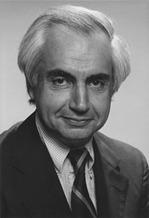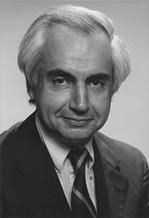The controversial life and legacy of Sonoma State University’s fourth president, Peter Diamandopoulos, ceased when he passed away on April 1 in New York City at the age of 86.
Diamandopoulos’ presidency at Sonoma State began in 1977, but ended six tumultuous years later with his resignation at the behest of the California State University.
As president of Adelphi University in New York from 1985-1997, he garnered national attention for excessive compensation and mismanagement. At an institution of no more than 6,000 students, Diamandopoulos became the second-highest paid president in the nation.
After an investigation by New York’s attorney general, it was discovered among numerous perks, the university bought a $1.2 million condo, $82,000 Mercedes and leased a $7,500-a-month Manhattan apartment for Diamandopoulos.
Diamandopoulos was ultimately dismissed when New York’s State Board of Regents replaced 18-of-the-19 Adelphi University trustees for neglect of duty and misconduct.
Over a decade before he became a national figure at Adelphi University, Diamandopoulos became embroiled in an era of turmoil at Sonoma State.
“There was a great deal of fear on the campus during his service,” said Noel Byrnes, former chair of the Academic Senate and professor of sociology. “Under Diamandopoulos lots of faculty lost their jobs. Administrators had no protection and were extremely vulnerable. He fired people on a whim.”
Victor Garlin, Academic Senate member and former president of the California Faculty Association chapter at Sonoma State, was critical of Diamandopoulos.
“He was a person who had utter contempt for the opinions of the faculty,” said Garlin. “He was an autocrat. He would love you on a Monday and hate you on a Tuesday. With this kind of behavior, there was no stability on campus.”
Byrnes said Diamandopoulos’ arrival at Sonoma State was met with particular enthusiasm. From 1970-1976, four individuals held the position of president, one of which under interim basis. The arrival of Diamandopoulos as a Harvard educated elite, who most recently held the position of chairman of the Philosophy Department at Brandeis University, was a welcome hire.
Susan Moulton, chair of the art department at the time of Diamandopoulos’ arrival, said rhetoric ensued of efforts to build Sonoma State’s prestige to the caliber of private institutions on the East Coast.
Spurred by reduced enrollment and budget, Diamandopoulos quickly lost favor among faculty as he proceeded to terminate employees. Byrnes said his personal experience in the sociology department reflected the turnover across campus.
Hired on contract in fall of 1978, Byrnes said the department started with 12 professors, much of whom were tenured. In a matter of semesters, the department shrunk to three.
Byrnes said most professors who survived this era, picked up classes in other departments.
Neither Byrnes nor Moulton alleged Diamandopoulos engaged in blatant financial misconduct, which spurred his removal at Adelphi University.
Moulton said Diamandopoulos did elect to promote programs which accentuated his personal standing. Byrnes said he didn’t make any sacrifices in his salary while others.
lost their jobs.
In the years ahead, Sonoma State’s Academic Senate repeatedly passed votes of no confidence and censured Diamandopoulos on two occasions, alleging “favoritism” and “cronyism,” as accounted in Lionel S. Lewis’ “When Power Corrupts.”
The American Association of University Professors, who investigated Diamandopoulos’ administration after numerous firings, placed Sonoma State on their censure list.
The censure list identifies administrations who don’t recognize the bylaws of Principles on Academic Freedom and Tenure.
It wasn’t until David Benson’s presidency at Sonoma State, from 1984-1992, did the American Association of University Professors remove the university from the censure list.
Newly appointed chancellor for the California State University, W. Ann Reynolds, was ultimately pressured to oust Diamandopoulos in the summer of 1983.
The legacy of Diamandopoulos became notable to Moulton, who connected his presidency with the national shift of education.
“I don’t think [Sonoma State] ever fully recovered from that kind of authoritarian rule,” Moulton, “Unfortunately in the 1990s, it became more common for universities and colleges across the country to become more business focused. We were destabilized under Diamandopoulos and we never really got back the kind of character that distinguished Sonoma State [as] a unique institution.”





![[Both photos courtesy of sonoma.edu]
Ming-Ting Mike Lee stepped in as the new SSU president following Sakakis resignation in July 2022](https://sonomastatestar.com/wp-content/uploads/2024/04/CC4520AB-22A7-41B2-9F6F-2A2D5F76A28C-1200x1200.jpeg)



























